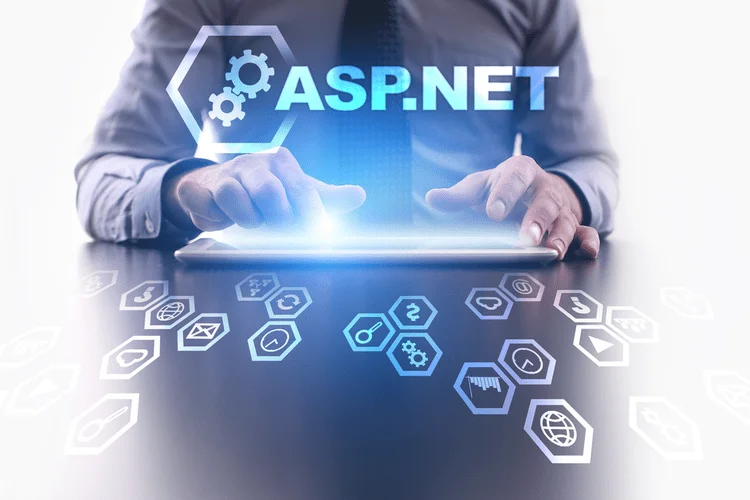In essence, whereas SDLC focuses on the “how” of creating software program, ALM supplies a holistic view, addressing the “how” as nicely as the “what” and “why” throughout the application’s entire lifespan. The first step to the event of any software program product is to brainstorm and decide on the product’s requirements. We complete this main step by speaking to the shopper and clarifying their expectations and calls https://www.globalcloudteam.com/ for or by contemplating whether or not or not the product concept matches the company’s mission. Kovair is a lot of the complete Application Lifecycle Management product. It can handle finish to end improvement lifecycle stages from Requirements to Release. Design administration is a course of that helps to boost customer satisfaction and loyalty by improving usability.
They code the applying and release it to a beta group in two months. You could find all of the features you want in 1 software, or you might need to integrate with extra tools—developer-specific tools, for example. The ALM tool you choose should also assist your growth process, whether or not it is agile, waterfall, DevOps, or something else. When approaching software growth with ALM, you should consider the whole lifespan of the applying.
- Application lifecycle management (ALM) effectively integrates multiple disciplines and groups to permit them to work collectively effortlessly to ship an excellent product.
- Develop the business case, plan sources, and map the lifespan of the app earlier than committing to development.
- Completing the three phases of ALM successfully will not be a straightforward task; but, it is achievable, through the use of the proper tools, and following the proper software growth methods and methodologies.
- This helps organizations meet business aims and enhance person experience.
ALM processes and tools assist improvement and testing teams to plan and implement their project strategy. They can estimate project requirements more precisely and better map out the application’s future. They also can make real-time selections and regulate the plan effectively as conditions change. Application Lifecycle Management (ALM) is the creation and maintenance of a software application till it’s no longer used.
What Are The 5 Stages Of Alm?
Also, new applied sciences or enterprise instances might require updates to existing purposes. DevOps groups usually deploy continuous supply (CD) pipelines to automate the process of sustaining and automating apps. When a developer creates new code for an application, steady delivery solutions automate the method of making a testing environment for the model new code. If new code meets the testing necessities, it is routinely deployed.
In a method, the very nature of utility lifecycle administration is such that it dictates the adoption of Agile, Lean, and DevOps development approaches. These three approaches can combine nicely with each other within the ALM pipeline, enabling teams to effectively collaborate, in course of delivering top-quality companies to prospects. With options like version management and real-time planning (found in many ALM tools), staff leaders rapidly and decisively map out an app’s future.
What’s Alm (application Lifecycle Management)?
Specifying requirements usually occurs top-down, meaning the needs start with probably the most common and transfer into the more particular and detailed. As a result, case requirements are sometimes in a hierarchical tree construction, with every node representing a extra particular sub-requirement for a more basic mother or father node. However, other development approaches, such as the iterative Agile growth course of, use less hierarchical constructions to record necessities, with the outlined needs identified as use circumstances. The operations and maintenance stage is what focuses ALM on the entire lifespan of an utility. For agile and DevOps groups, testing ought to occur concurrently with growth. Feedback should be handed back to the event group in a steady manner.
Last however not least, an equally necessary task in this stage is deciding upon the retirement of the appliance; that goes to say, after we deem it out of date and we no longer want it in service. Ultimately, that is when the ALM ends — with the end of the application’s lifecycle. Application lifecycle administration (ALM) successfully integrates multiple disciplines and teams so they can work together effortlessly to ship an excellent product. It is the process of changing source code information into standalone software program part.
Supplies Clear Project Path
Cloud-based ALM instruments will become the norm as companies proceed their digital transformation journeys, allowing seamless integration, collaboration, and scalability. Artificial Intelligence (AI) and machine studying (ML) are not simply alm significado buzzwords but transformative forces in varied industries. In ALM, AI can predict potential defects, automate routine duties, and optimize testing procedures, ensuring extra robust software program quality.
So, as soon as the planning stage is complete — and all necessities have been outlined, and agreed upon — the application improvement stage begins. In addition, software lifecycle management supplies an organization with a transparent course for its workflow before builders begin constructing the app. The first stage — defining requirements — permits firms to develop a enterprise case, determine the app’s lifespan and plan the required resources before committing to growth. This saves the organization money and time by avoiding pointless work and expensive mistakes.

Once every thing is deliberate — around this concept — the applying turns into clearly defined. Then, it goes into the development and production part, and it gets deployed. Managing the applying life cycle helps streamline the Dev team’s workflow, whereas also bettering the software program development process. On one hand, by serving to managers and their dev team(s) set particular requirements for every software; and, however, by ensuring that these requirements are met. Application lifecycle management (ALM) and the software development life cycle (SDLC) are sometimes confused or used interchangeably as a end result of they each address software development.
Find out how options designed to cowl the whole software lifecycle will assist you to deliver quality software faster. While ALM covers the entire utility lifecycle, SDLC solely focuses on the software program improvement course of. In other words, ALM contains all five levels of the app’s lifecycle — requirements, development, testing, deployment and maintenance — however SDLC only consists of one stage — development. The software program improvement lifecycle (SDLC) is a systematic methodology that you ought to use to provide quality software program affordably. Software growth teams use the step-by-step method of the SDLC to successfully design, develop, test, and deploy software program. As it occurs with every little thing that evolves and grows, an application’s lifecycle, too, is marked by a sequence of occasions.
And integrating ALM tools into your improvement course of will be the finest way to get visibility — and traceability — throughout the development lifecycle. ALM — software lifecycle administration — is the method of managing the life of a product from preliminary ideas via finish of life. ALM device dashboards can be customized, and the reporting that appears may be personalized to finest profit the specific consumer. The improvement and testing phases conclude when the product reaches quality and stability adequate for release. Different developers can work on a single code base, make and combine changes, and effectively handle the development course of.

If you may be planning an incremental and test-driven method on your next utility, you’ll have the ability to think about ALM. There are a number of tools that may assist by way of the different levels of improvement and planning. As a number one cellular software development company, Space-O Technologies has delivered capable options with ALM. You can look through our portfolio and sources to learn extra about how we applied ALM.
Software development lifecycle (SDLC) refers to the processes or procedures involved in making a high-quality software program product. Application lifecycle administration is just like SDLC, however it incorporates a larger vary of processes. This course of varies based on the application type because each product type requires different attributes and specs. For instance, software program as a service (SaaS) apps should be deployed on the corporate’s inner servers, while users can access web apps via the internet.
This means, they’ll achieve visibility, and track each new alteration in the code, to ensure they’ve successfully handed into manufacturing. This implies that the ALM instruments the team makes use of can integrate with CI (Continuous Integration) servers, proving that ALM and DevOps go hand in hand. Even though ALM will get past the mere growth of an utility, nonetheless, the event stage is certainly a elementary a half of the application’s lifecycle. In this stage, the product will get from an thought, into a working software.
They can use automation to test supply code incessantly and troubleshoot coding errors early. By testing the complete code for every change, teams can ship new software features sooner and more confidently. The number of bugs or defects identified after launch is usually a key indicator. Fewer defects imply your development and testing stages are efficient, making certain your end-users have a seamless expertise. On the opposite hand, Application Lifecycle Management (ALM) encompasses a broader spectrum. While it actually includes the event course of, ALM spans the complete life of an software — from inception to retirement.
